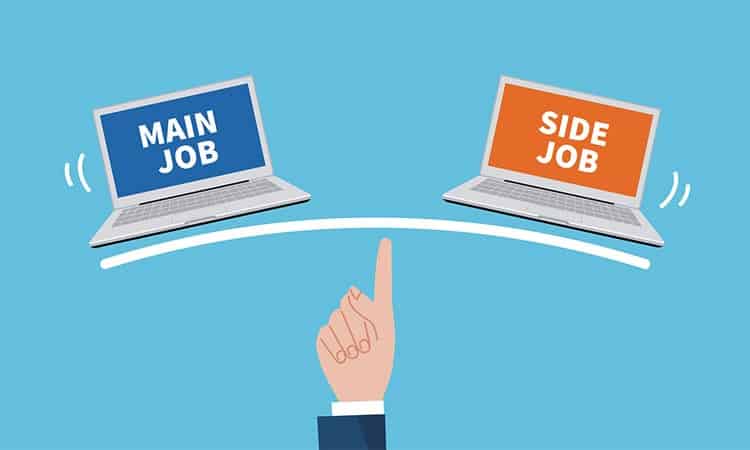The world will not be the same after 2022. Fresh off a pandemic, the world is still reeling from that trauma, which resulted in interesting personal and professional choices. Hybrid and remote work saw an instant soar, and continues to be the mode of work most people prefer nowadays (The Great Resignation anyone?), because it allows a work-life balance not experienced previously. Many hybrid, remote, and even some full-time employees along with freelancers have found interesting ways to keep this balance. If unchecked, these behaviours could become detrimental to both employees and employers. In this article, we will explore some of these phenomena, and also explain some solutions to better handle these situations.

Quiet Quitting
‘Quiet quitting’ has been recently coined to describe employees who are disengaged from their job and gradually reduce their effort and commitment, without formally resigning. It refers to employees who may still show up to work, but have mentally checked out and are no longer actively contributing to the growth of the organization. In other words, they are working simply for survival, not passion, and can quit any minute.
Employees may engage in ‘quiet quitting’ for various reasons, such as feeling undervalued or unrecognized, being overworked or underpaid, lacking opportunities for growth or advancement, experiencing poor management or a toxic work environment, or feeling disconnected from the company’s mission and values.
Quiet quitting can have negative consequences for both the employee and the organization. For the employee, it can lead to burnout, stress, and decreased job satisfaction. For the organization, it can result in decreased productivity, lower morale, and a negative impact on the bottom line.
Employers can attempt to solve this issue. Steps such as improving communication, providing opportunities for growth and development, recognizing and rewarding employee contributions, and creating a positive and supportive work environment can help.

Moonlighting
Moonlighting refers to the practice of working a second job or engaging in additional work outside of one’s primary job. It can also refer to taking on additional work within the same company or organization, such as working overtime or taking on freelance projects.
Moonlighting is often done to supplement income, gain experience, or pursue a personal passion or interest. However, it can also be done out of necessity, such as to make ends meet or to pay off debt. Some people also choose to moonlight as a way to transition into a new career or to build a side business. Many people use coworking spaces for moonlighting. It is an excellent space for an employee to take on additional roles, possibly remote or freelance, without interference from their primary employer.
Although this is a positive way to build a career, it can seriously hamper work-life balance and also cause issues with employees. It can lead to exhaustion, burnout, and decreased job performance, as well as conflicts of interest or violation of company policies. Employers may have policies in place that limit or prohibit moonlighting, particularly if it involves work that competes with the company or conflicts with the employee’s primary job responsibilities. Some employees knowingly violate employer policies and moonlight secretly, which can become a punishable offense by law.
It is important for employees to understand their employer’s policies regarding moonlighting and to ensure that any additional work they take on does not interfere with their primary job or pose a conflict of interest. Employers should also communicate their policies clearly and fairly to employees and address any issues that may arise related to moonlighting.

Career Cushioning
Coworking spaces are heavily used for career cushioning purposes. Basically, the term refers to the practice of keeping backup career options or skills in case of job loss or career disruption. It involves maintaining a level of professional flexibility and resilience by actively developing and diversifying one’s skills and career opportunities. So how are coworking spaces used for cushioning? It is obvious that coworking spaces regularly hold trainings, workshops, conferences, and seminars on professional skills. They also allow a profound level of networking, which can drive an employee’s professional growth marvelously.
Career cushioning can take various forms, such as pursuing education or training in a related field, networking with professionals in other industries, building a strong online presence or personal brand, or starting a side business or freelancing on the side. The idea is to create a safety net or cushion that can help protect against the potential risks and uncertainties of the job market.
Career cushioning can be particularly valuable in today’s rapidly changing and uncertain job market, where technological disruptions, economic shifts, and global events can impact industries and job prospects. By developing and diversifying one’s skills and career options, individuals can better position themselves for success and resilience in the face of these challenges.
It is important not to become too distracted or spread too thin by pursuing too many backup options, and to ensure that career cushioning efforts align with one’s core values, interests, and strengths. In fact, it is better to only develop skills and experiences in line with your current profession.

Boomerang Employees
A “boomerang employee” is an individual who leaves an organization, and then later returns to work for that same organization again at a later time. Boomerang employees can bring a number of benefits to an organization. They often have knowledge of the organization’s culture and values, as well as experience with its policies and procedures. They may also have valuable skills and knowledge gained from their experience outside the organization. Additionally, returning employees can be more committed and engaged, since they have made a conscious decision to return to the company. They can bring new concepts and skills from their previous organization.
Boomerang employees can also be an indicator of a positive work environment, since employees are more likely to return to a company if they had a good experience there in the past. Employers can leverage this trend by creating a positive work culture and encouraging open communication, support, and development opportunities for employees.
However, there can also be some challenges with boomerang employees, such as the need for reintegration and acclimation to changes in the organization since they left. Employers may need to ensure that returning employees receive appropriate training and support to ensure a smooth transition back into the organization.
Now that you are aware of these career trends, you can now make a more informed decision about professional development and where you want your life to go! A certain level of flexibility and freedom can really help, but too much can make things go awry in your career. This is why seeking the help of experts and mentors is important.



